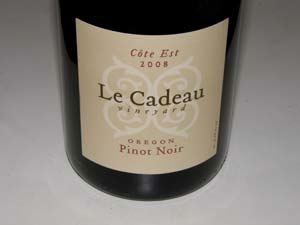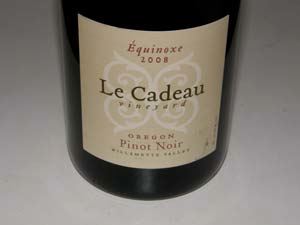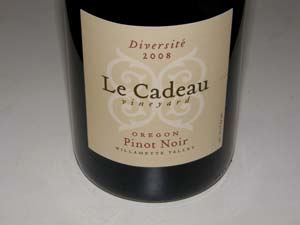Le Cadeau Vineyard: A Rocky Situation
Tom and Deb Mortimer are transplants from Minnesota who acquired a never-before-cultivated 28-acre hillside
property on the southern tip of Parrett Mountain in the Dundee Hills near Newberg, Oregon in 1996. A 17-acre,
moderately high elevation (610’-725’) vineyard was developed and planted with a singular focus on growing
distinctive estate Le Cadeau Pinot Noir. Le Cadeau translates as “the gift” in French. The vineyard is known
as the rockiest vineyard in Oregon. It took a team of track-hoes, D-8 Cats, and tractors more than two years
just to clear the raw land. Tom, who is a Burgundy freak, feels the effort and cost was well worth it. The
advantage of planting Pinot Noir vines in this rocky volcanic soil is that this soil type promotes drainage,
regulates temperatures of the vines, and reduces vine vigor. The result is small fruit clusters with tiny berries
that potentially can lead to rich, fragrant wines.
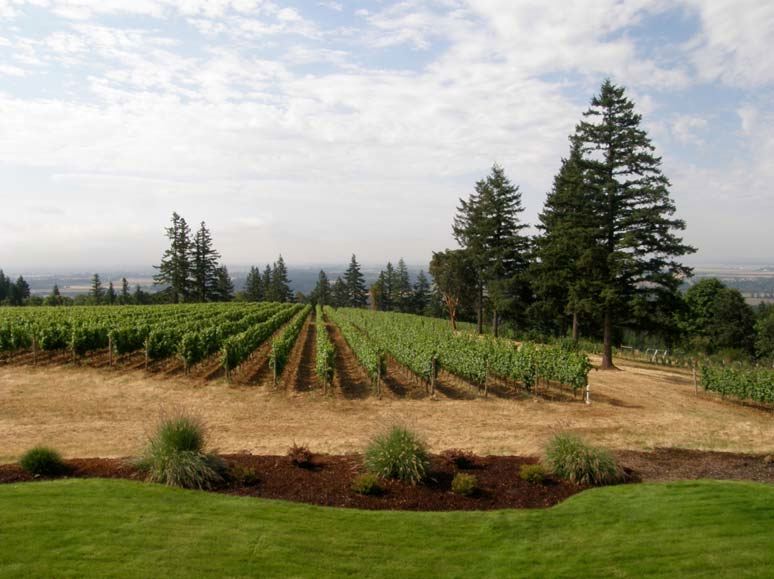
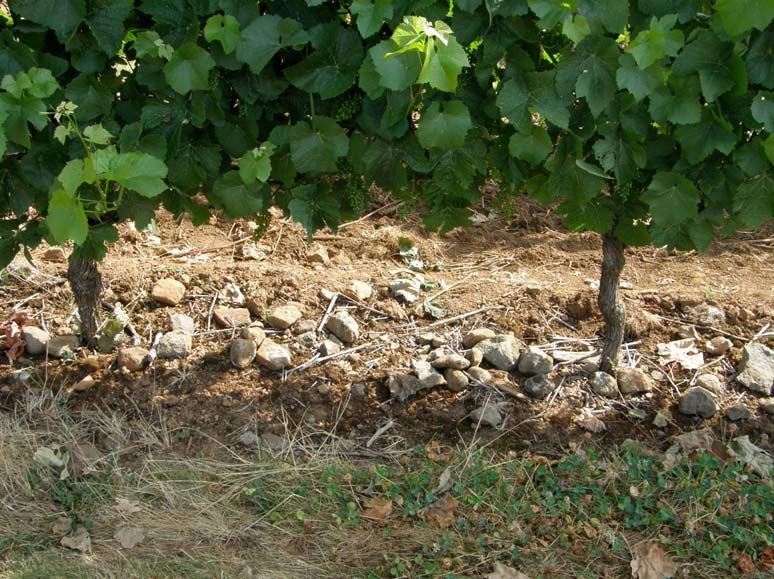
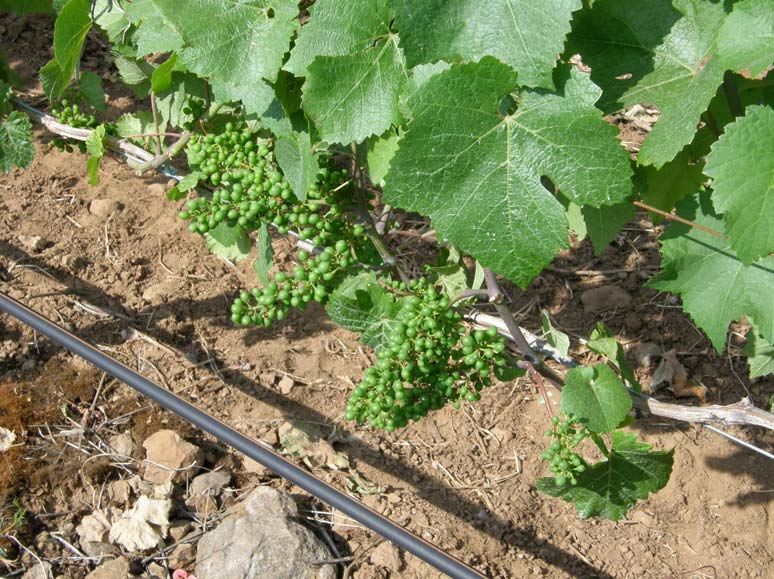
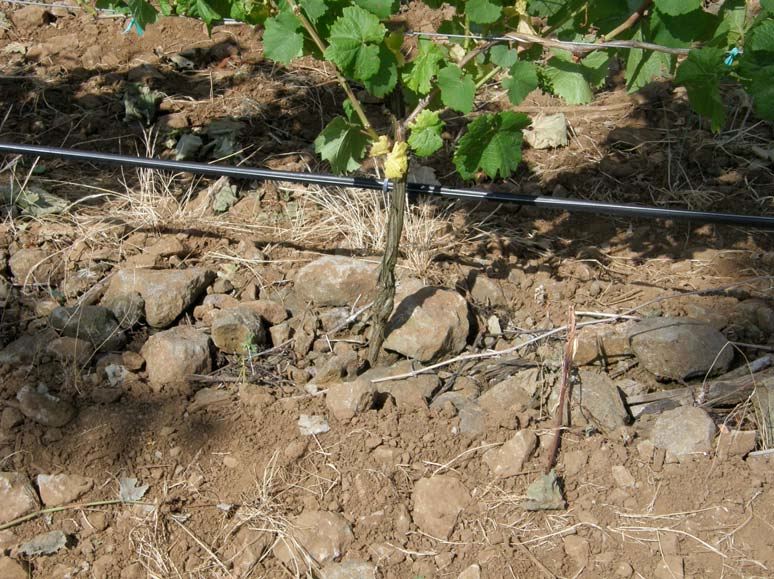
I visited the Mortimers at Le Cadeau Vineyard after the 2010 International Pinot Noir Celebration. They related
their story to me. The first 6 acres of Pinot Noir were planted in the spring of 1999: 1.75 acres each of
Pommard and Dijon 667 and 777, and .75 acres of Mariafeld, Pommard and 777, 113 and 115 in another east-facing
area of the property. This .75-acre site became a rootstock test site, planted with different clones on
various rootstocks. By 2000, viticulturist Buddy Beck, who had worked at Domaine Drouhin Oregon for many
years, and his associate, Angel Martinez, took over the vineyard management and remain in charge today. The
project turned out to be very expensive and was dubbed “The Black Hole Vineyard” by Deb Mortimer.
The first wine from the property came in 2002 and was released in 2005, eight years and four months after
purchase of the property. Encouraged by the character of this wine, an additional 4 acres of Pinot Noir, clones
114 and 115, were added bringing total vineyard acreage to 10 acres. 1,200 cases of Pinot Noir followed in
2006, but critical acclaim spurred on further planting. An additional 5 acres was planted that year, consisting of
several additions to existing plantings using various clones including 114, 777, 667 and Pommard. 1.5 acres
were added in the fall of 2008, including heritage clones such as certified Swan clone, likely the first certified
Swan clone (UCD 97) to be planted in Oregon. Some inter-planting has been done as well. As I walked the
vineyard, I was overwhelmed by the dizzying number of rootstocks, clones, spacing, and exposures. One thing
was consistent: rocks were visible on the surface everywhere. The entire 17-acre vineyard (1 acre of which is
on neighboring property but is farmed by Mortimer) will be in full production by 2012 and it is expected that Le
Cadeau will be producing just over 2,000 cases of Pinot Noir annually.
Noted viticulturist, Daniel Roberts, has consulted in recent years and there has been a concerted emphasis on
shoot positioning.
Tom made an unusual decision at the onset to use several consulting winemakers for each of the Le Cadeau
Pinot Noir cuvées and the wines are vinified at each of the winemaker’s respective facilities. A complete listing
of winemakers by cuvée is on the web site. I personally do not agree with this approach as it is difficult to get
your arms around the five different cuvées representing different parts of the vineyard, different clones, and
various winemaking styles, whose character varies considerably. The result is a puzzling array of wines
without a Le Cadeau signature that can be recognized by most consumers and even connoisseurs.
For the 2008 vintage, the wines include Côte Est (winemaker Steve Ryan, a former winemaker at Martinelli in
California and now located in Hopland), Diversité (winemaker Scott Shull of Raptor Ridge), Équinoxe
(winemaker Jim Sanders who trained under Mike Etzel at Beaux Freres), Rocheux (winemaker Jacqueline
Yoakim of Keller Estate in California), and Serendipity (winemaker Tony Rynders, formerly of Domaine Serene
for 10 years). For 2009, a Red Label Le Cadeau Vineyard Pinot Noir is crafted by Jim Sanders and is offered
as an earlier drinking wine at a lower price point.
Le Cadeau wines may be ordered through the winery’s online store at www.lecadeauvineyard.com. There is
some retail distribution nationwide as well. The website is highly informative. Visits to the vineyard are by
appointment only. The Mortimers are very gracious hosts.
I tasted through several Le Cadeau bottlings during my visit with Tom and Deb Mortimer. Tom feels the wines
take at least four years after bottling for maximum enjoyment.
2006 Le Cadeau Côte Est Oregon Pinot Noir
Vinified by Josh Bergstrom (2004-2006 vintages).
·
Great nose
with effusive aromas of marionberries. Delicious ripe and sweet tasting berry fruit wrapped in supple tannins
and finishing on a high note with refreshing acidity. Very good.
2008 Le Cadeau Serendipity Oregon Pinot Noir
14.1% alc., 68 cases.
·
Vinified by Tony Rynders. Demure,
but pleasing aromas of dark red cherries and berries with a hint of spice. Well-spiced array of dark red fruits
with a touch of savory herbs on the palate with bright acidity on the finish. Very good (+).
2008 Le Cadeau Équinoxe Oregon Pinot Noir
50 cases. Vinified by Jim Sanders.
·
A beautiful wine with shy
dark fruit aromas and intense dark fruit flavors. Still evolving with the structural backbone and acidity to last.
Good (+).
2008 Aubicon Cellars Reserve Oregon Pinot Noir
Beginning in 2007, Tom Mortimer and Jim Sanders
sourced from hillside vineyards farmed by Buddy Beck and produced about 300 cases of an Aubichon Reserve
Pinot Noir ($42) and Aubichon Willamette Valley Pinot Noir ($34).
·
Adequate, but simple and homogenous fruit
flavors, finishing with a little alcoholic heat. A daily drinker. Decent.
The following three wines were tasted in my usual fashion at home. I hope to re-taste them in another year or
two to see how they evolve.
2008 Le Cadeau Côte Est Oregon Pinot Noir
13.9% alc., 351 cases, $48.
From the cooler east side of the property where fruit is shaded from morning sun
by neighbor’s trees. Winemaker Steve Ryan.
·
Moderately dark reddish-purple
color in the glass. The nose lacks fruit, offering scents of pine, oak, spice and
cut flowers. The black raspberry and black cherry flavors have an earthy
underpinning and a slight vegetal note. Smooth on the palate with a short finish.
Tasted the next day from a previously opened and re-corked bottle, the wine still
was rather closed with slightly more fruit showing on the nose and on the palate.
Hard to judge this wine currently which showed much better 9 months ago when
tasted at the vineyard. Like many Oregon Pinot Noirs from 2008, patience is
advised. Good.
2008 Le Cadeau Vineyard Équinoxe Oregon Pinot Noir
14.1% alc., 196
cases, $48. Winemaker Jim Sanders. Sourced from the crest of the hill where
the vines receive equal sun on both sides during the day.
·
Very shy nose with
hints of cassis and oak. Crisp and tasty with a moderately rich core of dark
berry and plum fruit supported by spice. Sporting notable tannins, this wine
needs more time for integration, but shows potential. Good (+).
2008 Le Cadeau Vineyard Diversité Oregon Pinot Noir
14.1% alc., 270
cases, $48. From varied clones planted throughout the vineyard.
·
The aromas
and flavors of this wine are buried in oak with coffee being the most prominent
feature. Big-boned darker fruits are featured with flamboyant tannins. Tasted
the next day from a previously opened and re-corked bottle, the wine tasted like
a coffee drink. Time in the cellar should moderate the oak and allow the fruit to
emerge, but this will always be an oaky wine. Decent at best currently.







